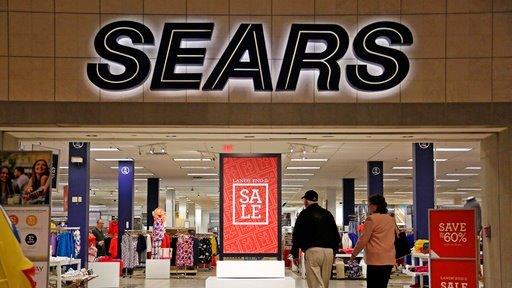Sears Drops New Bombshell, Acknowledges Doubts About Future
Sears Holdings, once the largest U.S. retailer, warned on Tuesday about its ability to continue as a going concern after years of losses and declining sales.
"Our historical operating results indicate substantial doubt exists related to the company's ability to continue as a going concern," Sears said in the annual report for the fiscal year ended Jan. 28.
The Sears catalog was an iconic part of the post-World War II consumer boom in the United States but Sears proved unable to adjust to changing consumer demands with the emergence of Wal-Mart Stores, Target and other competitors.
The company lost $2.22 billion in the year to Jan. 28.
Since 2013 it has accumulated $7.4 billion in losses and seen revenue fall 44 percent to $22.1 billion.
Its total liabilities stand at $13.19 billion.
In recent years, Sears has placed some of its stores into a real estate investment trust, put some brands up for sale and repeatedly raised debt from billionaire Chief Executive Edward Lampert's hedge fund.
Lampert owned nearly 10 percent of the real-estate investment trust that paid Sears $2.6 billion for stores that it purchased, many of which were then leased back to the retailer.
The company said last month it would cut costs by $1 billion and reduce debt and pension obligations by at least $1.5 billion this year.
Sears said on Tuesday actions taken during the year to boost liquidity, including its $900 million sale of the Craftsman tool brand to power tool maker Stanley Black & Decker, could mitigate the going concern doubt and satisfy its capital needs for the current fiscal year.
Additional asset sales could prove problematic, according to Sears' filing.
As part of the Craftsman sale, Sears Holdings reached an agreement with the Pension Benefit Guarantee Corp. that puts a claim on some Sears' assets in an effort to protect pensions of retired employees.
The agreement "contains certain limitations on our ability to sell assets, which could impact our ability to complete asset sale transactions or our ability to use proceeds from those sales to fund our operations," the company said.
Already, the pension board agreement requires Sears to make a $250 million cash payment to its pension plan three years after the consummation of the Craftsman deal, and the pension board has a 15-year lien on revenue owed to Sears from future sales of Craftsman products.
Sears, which had current liabilities of $4.68 billion as of Jan. 28, said it would continue to explore ways to unlock value from its assets.
The company said it could not predict with certainty the outcome of its actions to generate liquidity.
(Reporting by Ankit Ajmera in Bengaluru and Nathan Layne in New York; editing by Shounak Dasgupta and Jason Neely)

